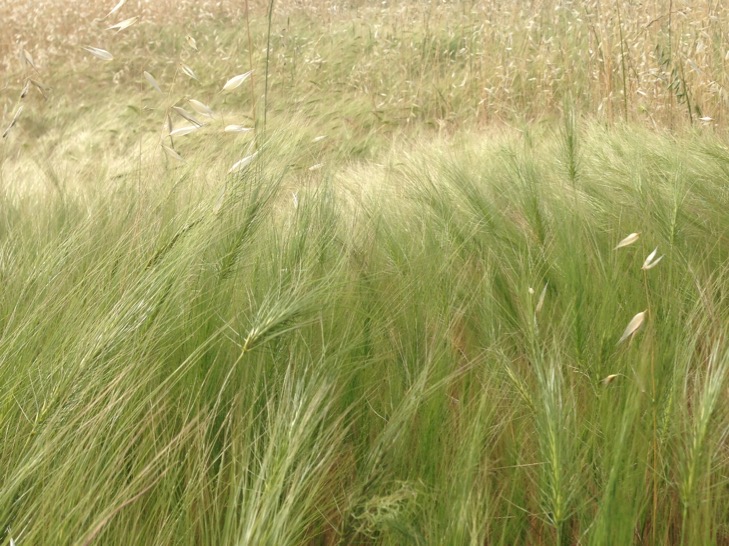How does global change affect invasion dynamics? Can we predict invasion dynamics in light of multiple change drivers?
Environmental changes - in precipitation, N deposition, temperature, and land use - are increasing at a rapid rate. Shifting environmental conditions can change competitive interactions among species and facilitate the invasion of new species. We use experiments and models to test the effect of multiple global change drivers on patterns of species invasions. Our aim is that by understanding invasion dynamics, we can better prevent future invasions and restore currently invaded ecosystems.
Nitrogen deposition and resilience
California grasslands are co-limited by water and nitrogen. However, anthropogenic nitrogen deposition is providing a nutrient release that reduces nitrogen limitation and shifts species competitive interactions. For example, the native perennial bunchgrass Stipa pulchra can tolerate low-nitrogen conditions, whereas non-native annual grasses are favored by increased nitrogen availability. At high levels of nitrogen deposition annual grasses can competitively exclude Stipa. However, at intermediate levels of nitrogen, we have demonstrated a hysteresis effect in which Stipa can persist but cannot invade annual communities, and vis versa. In collaboration with Loralee Larios and Katharine Suding, we are experimentally testing how this phenomenon shifts along nitrogen gradients, and exploring the feedback processes that underlie it.
Similarly, serpentine grasslands are characterized by extremely low nutrient availability, which contributes in part to the high number of endemic species found in California serpentine grasslands. Low nutrient availability has also prevented annual grasslands, which are widespread throughout the rest of California, from invading into serpentine soils. However, nitrogen deposition has caused a state shift from native forbs to non-native annual grasses in some California serpentine grasslands. In collaboration with Stu Weiss, Richard Hobbs and Dana Chadwick, we are testing how directional shifts in nutrients interplay with high rainfall variability to affect grass-forb coexistence in this system.
Related publications:
Larios, L., L. M. Hallett, K. N. Suding. When and how to restore in a changing world: a demographic-based assessment of resilience. 2017. Journal of Applied Ecology 54(4): 1040–1050


